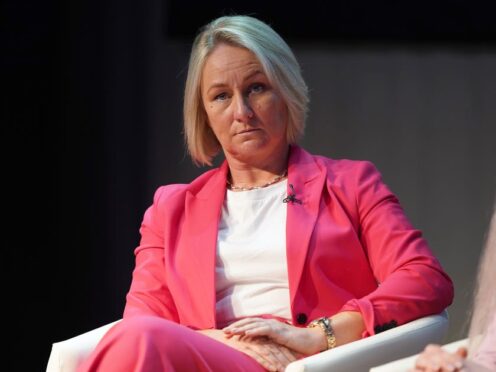
Police Scotland has “weaponised” its processes against officers who make complaints, a lawyer said, with MSPs also told it is “inevitable” the force will face another case similar to that of former firearms officer Rhona Malone.
Ms Malone was awarded almost £1 million after taking Police Scotland to an employment tribunal after she complained about sexism.
With MSPs now scrutinising new legislation brought forward by the Scottish Government in a bid to improve the police complaints and misconduct process, the lawyer who represented her said little had changed since that case.

A settlement with Ms Malone, which included a payment of almost £948,000 was agreed back in 2022, accompanied by a personal apology from the then chief constable, Sir Iain Livingstone.
In her case, the employment tribunal accepted evidence that there was an “absolute boys’ club” culture within the armed response vehicle team.
Lawyer Margaret Gribbon however told Holyrood’s Criminal Justice Committee that the process had impacted on her client’s health “to such an extent she had to retire”.
She added that the overall cost to the public purse from the case had been about £1.5 million.
But Ms Gribbon said: “I am afraid from the cases I have dealt with, and am currently dealing with on behalf of police officers, nothing I have seen unfortunately has convinced me there has been any sufficient change since the Rhona Malone judgement.
“I think it is inevitable there is going to be another case, or cases, of that type.”
The lawyer said: “I think the complaints handling procedure, it is crucial to that. Because in the Malone case they just didn’t deal with her complaints of sexism and misogyny.”
Ms Gribbon added there had been a “weaponisation of the complaint handling procedure” by Police Scotland and its professional standards department (PSD) which deals with complaints against officers.
She insisted this was particularly the case “in those clients I have represented, the ones who are standing up and whistleblowing and being courageous and brave enough to call out sex discrimination”.
Here she spoke about the case of Karen Harper, a former police officer who took the force to an employment tribunal, making a sex discrimination claim.
Ms Gribbon told the committee that PSD officers had gone to Ms Harper’s ex husband after she had raised a grievance, and had “invited him to make a complaint against her”.
She described it as “one example of culture” with regard to police complaints.
The lawyer accused the police of an “absolute failure to engage or address issues of misconduct involving discrimination”.
But speaking about the Police (Ethics, Conduct and Scrutiny) (Scotland) Bill, she added: “I don’t think it is going to make a massive amount of difference in practice.”
While the Bill proposes widening the functions of the Police Investigations and Review Commissioner (Pirc), Ms Gribbons said the changes proposed would only impact when misconduct allegations were made against the most senior members of the force.
She said that only officers of the rank of Assistant Chief Constable or higher would be impacted by these changes, with the lawyer adding: “What we’re talking about here is a dozen officers, I think it is 14 or 15.”
Such changes would “not affect the overwhelming majority of complaints against the police,” Ms Gribbon said, adding this meant in the “vast majority of complaints” it will be the police investigating the police.
Asked by Conservative MSP Sharon Dowey if the police complaints handling system needs to be “completely reformed”, the lawyer replied: “Undoubtedly”.
She told the committee: “If complaints were independently assessed in my view that would have quite a significant impact.
“At a time when we are rightly concerned about policing, the public do have concerns, we know there is a problem in relation to complaint handling but this Bill unfortunately is not addressing that for the vast majority of misconduct complaints against police officers.”
Assistant Chief Constable Stuart Houston said: “Police Scotland is committed to thoroughly, robustly and sensitively investigating all complaints made to us, whether the complaint is from a member of the public, a police officer or a member of police staff.
“Additionally, we have discharged the vast majority of Lady Angiolini’s recommendations from the review into complaints, investigations and misconduct in policing which apply to Police Scotland.
“Police Scotland continues to learn from complaints and deliver improvements as we seek to build and maintain the bond of trust which underpins our legitimacy to police with, and for, the public who we serve.
“We are committed to completing the remaining recommendations and are engaging with Scottish Government to progress and assist in shaping the legislative changes currently being presented to the Scottish Parliament. Police Scotland continues to work with our partners and the public to maintain and build our strong relationship of trust with our communities.”

Enjoy the convenience of having The Sunday Post delivered as a digital ePaper straight to your smartphone, tablet or computer.
Subscribe for only £5.49 a month and enjoy all the benefits of the printed paper as a digital replica.
Subscribe